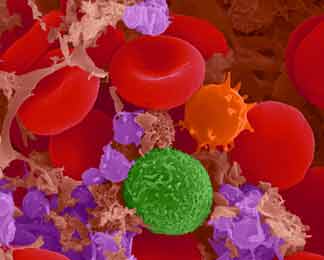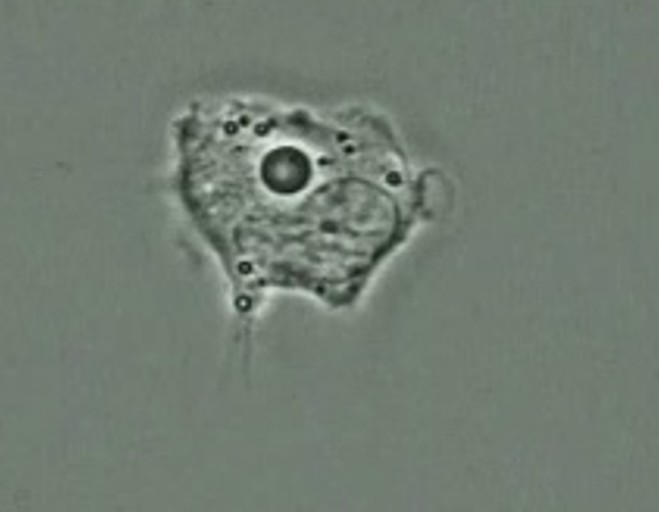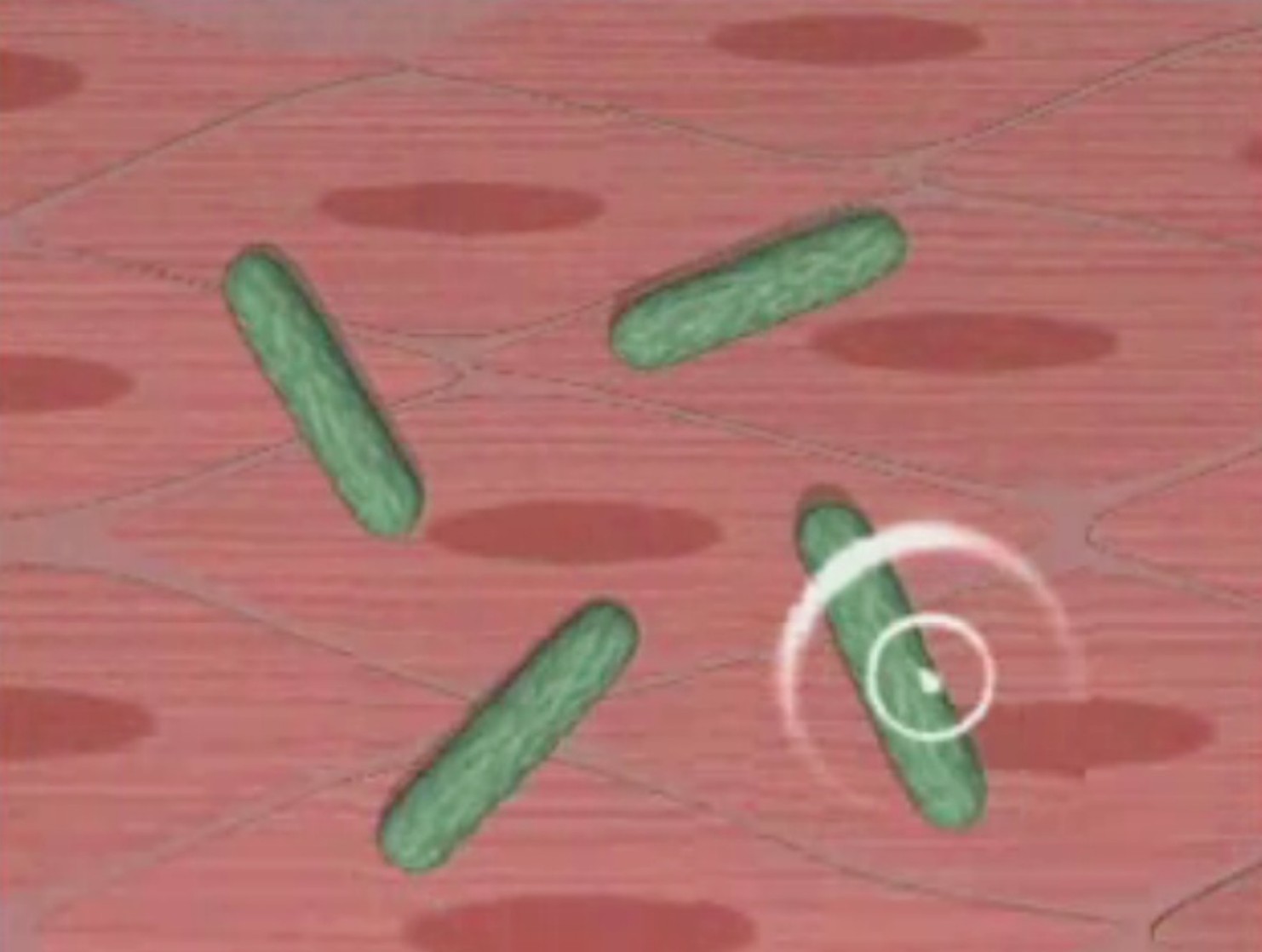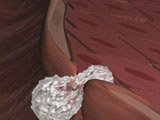 |
 Stem
Cells Stem
Cells  Red
Blood Cells Red
Blood Cells  White
Blood Cells White
Blood Cells
 Platelets Platelets
 Plasma Plasma
 Blood
Types & Activity Blood
Types & Activity
 Bloodology Bloodology

 |
 |
| White Blood Cells, Platelets (stained purple),
a T-Lymphocyte white cell (stained green), and a Monocyte white
cell (stained gold) as seen through a scanning electron microscope.
©2000 Dennis Kunkel, Ph.D. |
The scientific name for white blood cells is leukocytes. Because
white blood cells are hard to see when scientists look for them
under a microscope, they are usually stained with a bright colored
dye. Just like red blood cells, white cells are formed in the bone
marrow and are created by a parent cell called a stem cell.
 |
 |
Monocytes and lymphocytes
do not contain any granules. But when granulocytes detect
an invading germ, the lmphocytes and monocytes find it and eat
it. Then the monocyte examines the bits of protein the germ
was made of to see how it was put together. Next, the
monocyte calls on the lymphocyte T cell (or Helper T cell) which
learns to recognize what the germ looks like. The lymphocyte
T cell then engages the help of the lymphocyte B cell which
makes a special weapon called an antibody to use against the
germ. The lymphocyte B cell produces copy after copy of these
antibody weapons. When the antibody weapon finds its target,
the germ is stunned, wounded and killed. Then the granulocyte
and monocyte move in to finish it off. There are between
7,000 to 25,000 white cells in a single drop of blood. |
|
 |
 |

|
 |
 |
 |
 |
The coolest
blood cell is the white blood cell which fight the germs. 
|
 |
—
Katherine,
high school student |
 |
 |
|
 |








